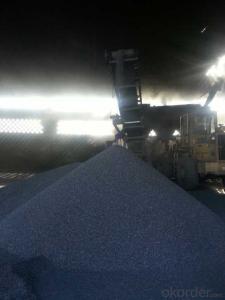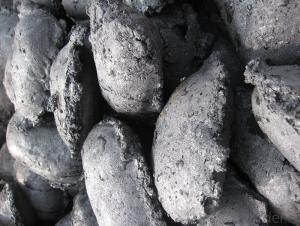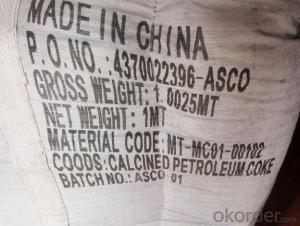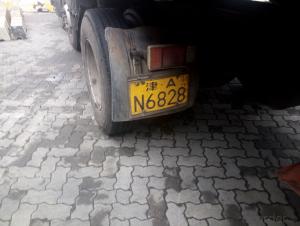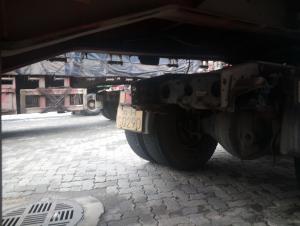Calcined Pitch Coke with Fixed Carbon 98.5%min
- Loading Port:
- Tianjin
- Payment Terms:
- TT OR LC
- Min Order Qty:
- 20 m.t.
- Supply Capability:
- 8000 m.t./month
OKorder Service Pledge
OKorder Financial Service
You Might Also Like
Introduction
Pitch Coke/Coal Tar Pitch is a kind of black brittleness and blocky piece, lustrously at normal temperature. It has special odour and poisonous and can be easily flame when melting, second-grade inflammable solid.
Pitch Coke/Coal Tar Pitch is obtained from powerfully processed coal tar. Compared to petroleum asphalt, the adhesiveness is better. Coal Tar Pitch is high quality tar production with high fixed carbon. It has excellent adhesion, waterproofing and resistance against seawater, oil and various chemicals. In these properties, it is much better than petroleum asphalt tar.
It can be used to produce painting, electrode, pitch coke, and tar felt. It also can be used as fuel and the raw material of asphalt carbon black.
Features:
The morphology, chemistry and crystallinity of recarburisers have a major impact on the overall casting cost. The combined application and cost benefits, which are derived through the use of Desulco, enable foundries to manufacture castings in a highly cost effective manner.
reduces
Recarburiser consumption
Power consumption
Inoculant consumption
MgFeSi consumption
Furnace refractory wear
Scrap rate
Tap to tap time
Slag inclusions risk
Chill
increases
Casting microstructure
Productivity
Process consistency
Carbon Recovery
Compared with calcined petroleum coke, acetylene coke and
graphite electrode scrap, Desulco yields the highest carbon
recovery and fastest dissolution time
Specifications:
CPC | |||
F.C.% | 98.5MIN | 98.5MIN | 98MIN |
ASH % | 0.8MAX | 0.8MAX | 1MAX |
V.M.% | 0.7 MAX | 0.7 MAX | 1 MAX |
SULFUR % | 0. 5MAX | 0. 7MAX | 1MAX |
MOISTURE % | 0.5MAX | 0.5MAX | 1MAX |
Pictures:

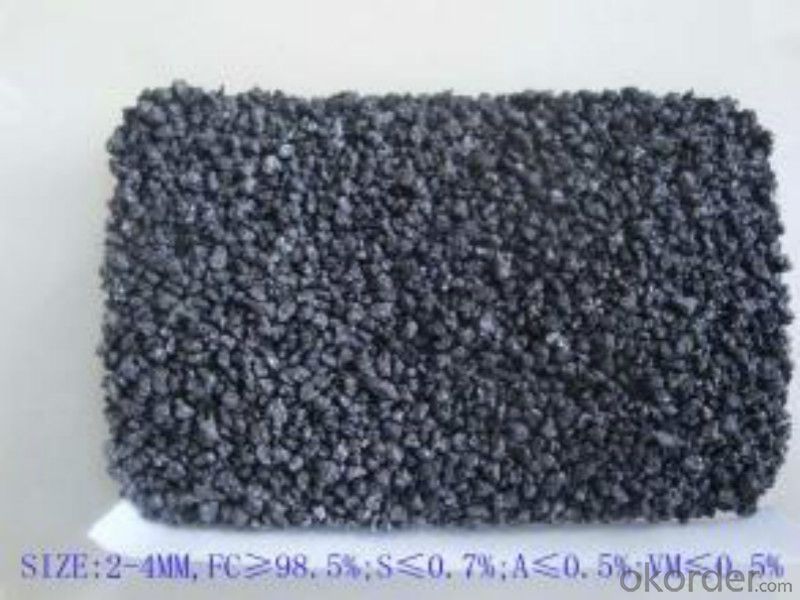

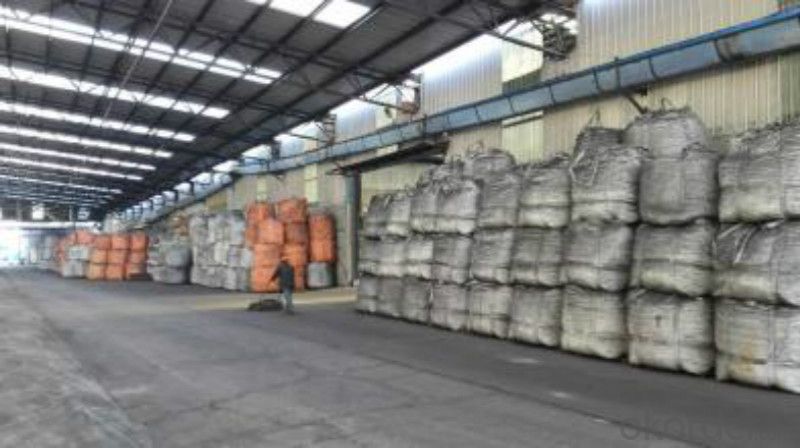
FAQ:
1.MOQ:2 Containers |
2.Size:1-3mm,1-5mm,2-6mm,3-5mm and as the customer's requirement |
3.Packing: 1 ton jumbo bag or 25kgs paper in bag |
4.Payment:T/T or L/C at sight |
5.Delivery time: within 15 days after receiving the deposit |
6.Usage: it is as carbon raiser,widely used in steelmaking,casting,casting iron,steel foundry,aluminum metallury. |
- Q: Intend to go to the barbecue and 35 friends over the weekend, but because it is new, so I don't know how to put the carbon burning, found some web sites are also a few pens, see me confused......Hope which experienced friend to help enlighten me, the best to the specific point, thank you ah!
- The day before yesterday, I had a barbecue with my friends in the scenic spot. It seems that the staff in the barbecue area are using alcohol and newspapers and a little bit of firewood to catch fire
- Q: How is carbon used in the electronics industry?
- The electronics industry utilizes carbon in various ways. Carbon is commonly used to produce carbon-based materials like carbon nanotubes and graphene, which have distinctive properties that make them ideal for electronic devices. Carbon nanotubes, for instance, are cylindrical structures formed by arranging carbon atoms in a tube-like fashion. They possess excellent electrical conductivity, thermal conductivity, and mechanical strength. These attributes make them valuable in electronic applications such as transistors, sensors, and batteries. By using carbon nanotubes, smaller and more efficient electronic components can be created, resulting in smaller, faster, and more powerful devices. On the other hand, graphene is a single layer of carbon atoms arranged in a two-dimensional lattice. It exhibits exceptional conductivity of electricity and heat, as well as remarkable mechanical strength. These properties make it suitable for applications like flexible displays, touchscreens, and energy storage devices. The use of graphene-based electronics has the potential to revolutionize the industry by enabling the integration of flexible and transparent devices into various surfaces and objects. Moreover, carbon is employed in the production of carbon-based resistors and electrodes. Carbon resistors are commonly used in electronic circuits to regulate the flow of current. They provide stable and predictable resistance, ensuring the proper functioning of electronic devices. Carbon electrodes, on the other hand, enable the flow of electrical charge in batteries, fuel cells, and capacitors. Additionally, carbon plays a crucial role in the manufacturing of printed circuit boards (PCBs), which are essential components in electronic devices. PCBs provide a platform for interconnecting various electronic components. Carbon is utilized as a conductive ink in the fabrication of PCBs, allowing for the creation of intricate circuit patterns. In conclusion, carbon is an indispensable element in the electronics industry. Its unique properties enable the development of advanced materials and components that enhance the performance and functionality of electronic devices. From carbon nanotubes and graphene to resistors and electrodes, carbon-based materials are shaping the future of electronics by enabling smaller, faster, and more efficient devices.
- Q: What is carbon Yi virus?
- The best time for colony characterization was 12~15 hours. Colonies are sticky, inoculated with needle hook can be drawn into wire, called "drawing" phenomenon. In the ordinary broth for 18~24 hours, the bottom of the pipe has flocculent precipitation, the growth of sterile membrane, liquid clear. The toxic strains were formed on the sodium bicarbonate plates and cultured in 20%CO2, and the mucoid colonies (capsules) were rough, while the avirulent ones were rough. (three) resistance, propagule resistance is not strong, easy to be killed by general disinfectant, and spore resistance, in a dry room temperature environment can survive for decades, in the fur can survive for several years. Once the pasture is contaminated, the spore can survive for years to decades. Boil 10 minutes or dry hot 140 hours 3 hours, can kill spore. Anthrax spore is particularly sensitive to iodine and is highly sensitive to penicillin, cephalosporin, streptomycin, kanamycin and so on.
- Q: Often see a lot of cars made of carbon fiber body, is this material flammable?
- Carbon fiber has the characteristics of light quality, high strength and not easy to burn. More and more widely used
- Q: How to identify a laptop shell is carbon fiber
- Carbon fiber, as its name suggests, is made from carbon fiber, so there are several characteristics. First, if it is not colored, you can see the obvious fiber. Second is black carbon color. And it's a lot more than ABS.
- Q: What are the impacts of carbon emissions on ecosystems?
- Ecosystems are significantly affected by carbon emissions, and their consequences can be observed at various levels of the food chain. One of the primary effects is the modification of the climate, as carbon emissions contribute to global warming and climate change. This alteration in temperature and weather patterns can disturb ecosystems and result in the depletion of biodiversity. Moreover, increased carbon emissions also play a role in ocean acidification, a process in which seawater absorbs carbon dioxide, leading to a reduction in pH levels. This can have harmful impacts on marine life, especially organisms that possess calcium carbonate shells like corals, mollusks, and specific plankton species. As the acidity of the oceans intensifies, it becomes more difficult for these organisms to produce and maintain their protective shells, ultimately causing a decline in their populations. Additionally, carbon emissions have the potential to influence the distribution and behavior of species. With rising temperatures, certain habitats become unsuitable for some species, compelling them to either migrate or adapt to new conditions. This can disrupt the fragile equilibrium of ecosystems, as some species may struggle to find sufficient resources or face heightened competition for limited resources in their new environments. Furthermore, carbon emissions have a significant impact on the frequency and intensity of extreme weather events such as hurricanes, droughts, and wildfires. These occurrences can result in the destruction of habitats, loss of vegetation, and displacement of species, ultimately affecting the overall well-being and stability of ecosystems. In conclusion, the effects of carbon emissions on ecosystems are profound and far-reaching. It is imperative to reduce these emissions and transition to cleaner sources of energy in order to mitigate these consequences and safeguard the delicate balance of our natural world.
- Q: 14 is the upper left corner of the mark, please answer a bit more detailed, thank you!
- The fastest and easiest way:Enter 14C first, then select 14, and press CTRL+SHIFT+ '+'.
- Q: What is carbon nanocomposite?
- Carbon nanocomposite refers to a type of material that combines carbon nanotubes or graphene with a matrix material, such as polymers or metals, to form a composite material. The carbon nanotubes or graphene are typically added in small amounts, often in the form of nanoparticles, to enhance the mechanical, electrical, and thermal properties of the composite material. Carbon nanotubes are cylindrical structures made up of carbon atoms arranged in a hexagonal lattice, while graphene is a single layer of carbon atoms arranged in a two-dimensional lattice. These carbon-based materials possess exceptional properties, such as high strength, electrical conductivity, and thermal conductivity. When incorporated into a composite material, these properties can be transferred to the overall structure, resulting in improved performance. The use of carbon nanocomposites has been explored in various industries and applications. In aerospace, for example, these materials have been investigated for their lightweight and high-strength properties, which could potentially enhance the fuel efficiency and durability of aircraft components. In electronics, carbon nanocomposites have shown promise for developing high-performance sensors, conductive films, and energy storage devices. Additionally, they have been studied for their potential applications in medical devices, automotive parts, and energy storage systems. Overall, carbon nanocomposites offer the opportunity to create materials with enhanced properties by leveraging the unique characteristics of carbon nanotubes or graphene. However, the production and scalability of these materials still pose challenges, and further research is needed to optimize their performance and cost-effectiveness for various applications.
- Q: How are carbon-based polymers synthesized?
- Carbon-based polymers are synthesized through a process called polymerization, which involves the bonding of monomers (smaller units) together to form long chains or networks. This can be achieved through various methods such as addition polymerization, condensation polymerization, or ring-opening polymerization, depending on the type of polymer desired.
- Q: How does carbon impact the global water cycle?
- Carbon plays a significant role in the global water cycle as it influences the temperature and precipitation patterns. Increased levels of carbon dioxide in the atmosphere, primarily due to human activities, contribute to global warming, leading to rising temperatures. These higher temperatures enhance evaporation rates, causing more water to evaporate from oceans, lakes, and other water bodies. This increased evaporation intensifies the water cycle, resulting in more frequent and intense rainfall events. Conversely, carbon emissions also contribute to climate change, which can lead to droughts in certain regions, disrupting the global water cycle and exacerbating water scarcity issues. Overall, carbon impacts the global water cycle by influencing temperature, precipitation patterns, and the occurrence of extreme weather events.
Send your message to us
Calcined Pitch Coke with Fixed Carbon 98.5%min
- Loading Port:
- Tianjin
- Payment Terms:
- TT OR LC
- Min Order Qty:
- 20 m.t.
- Supply Capability:
- 8000 m.t./month
OKorder Service Pledge
OKorder Financial Service
Similar products
Hot products
Hot Searches











